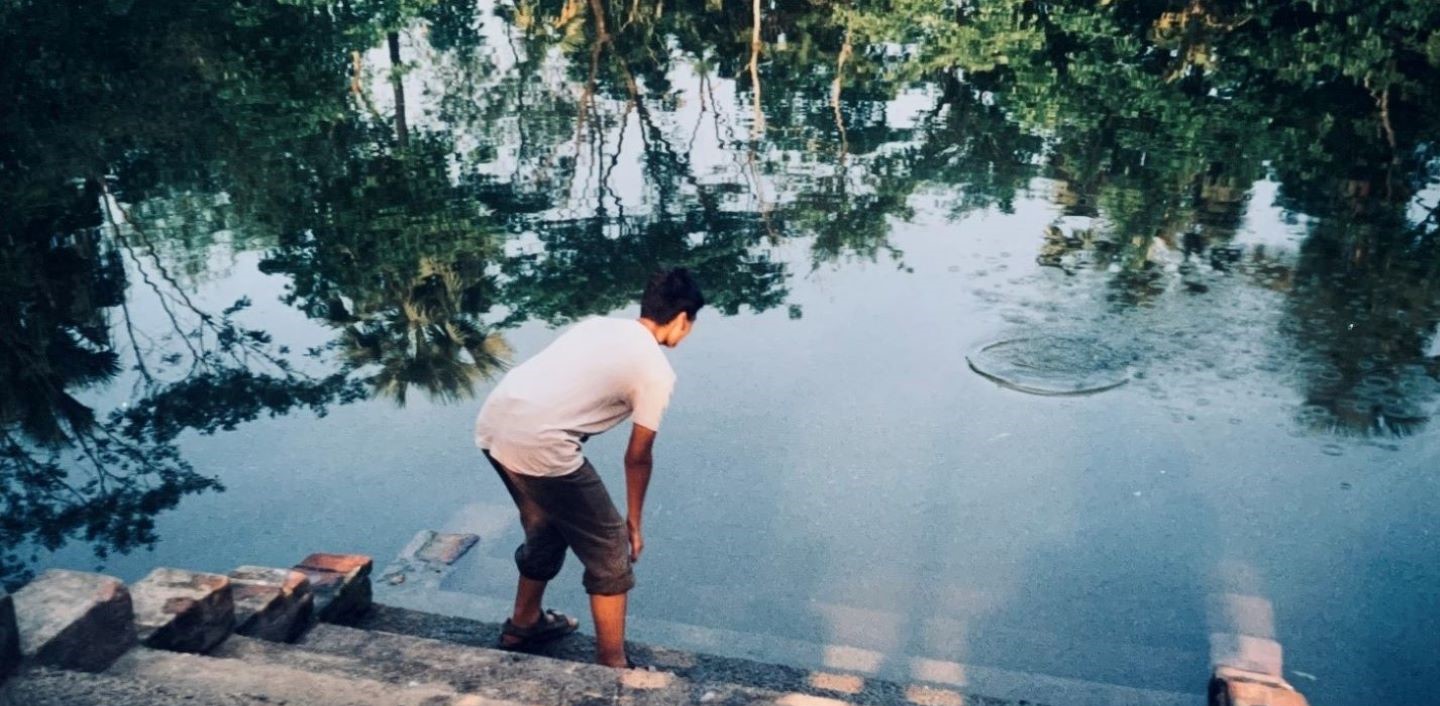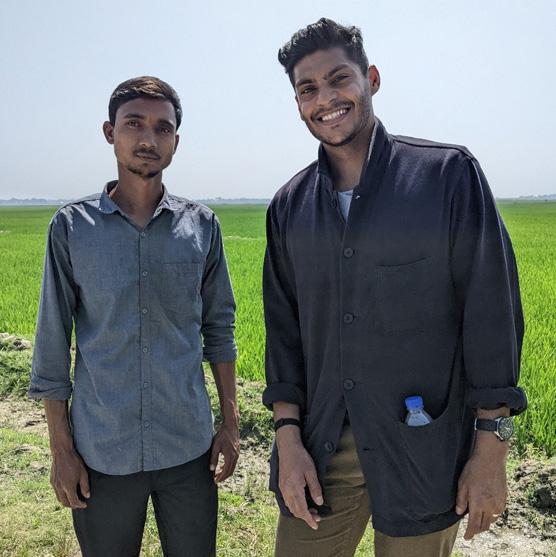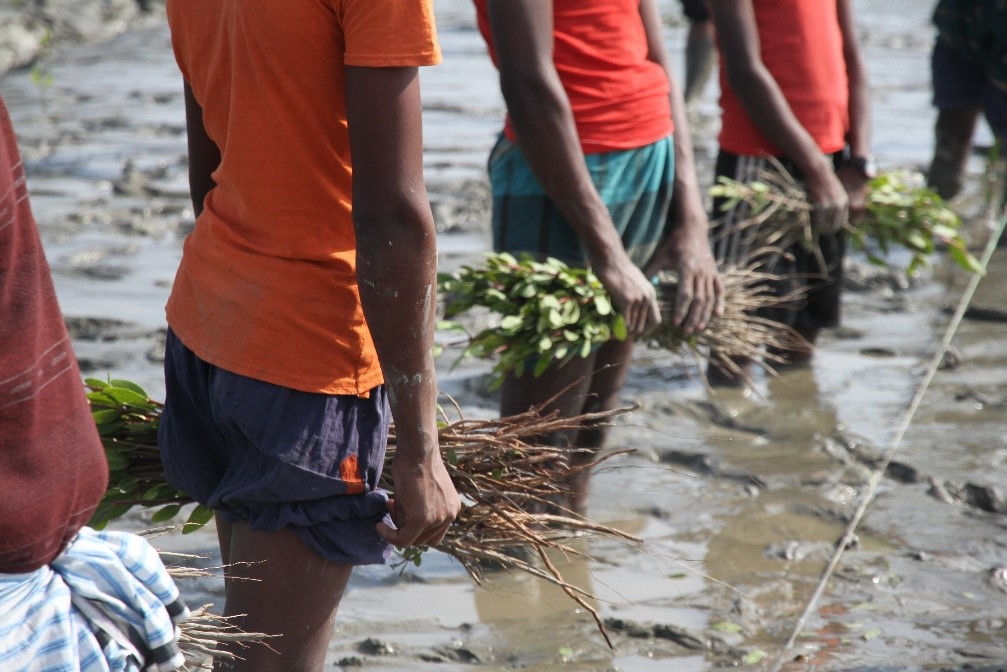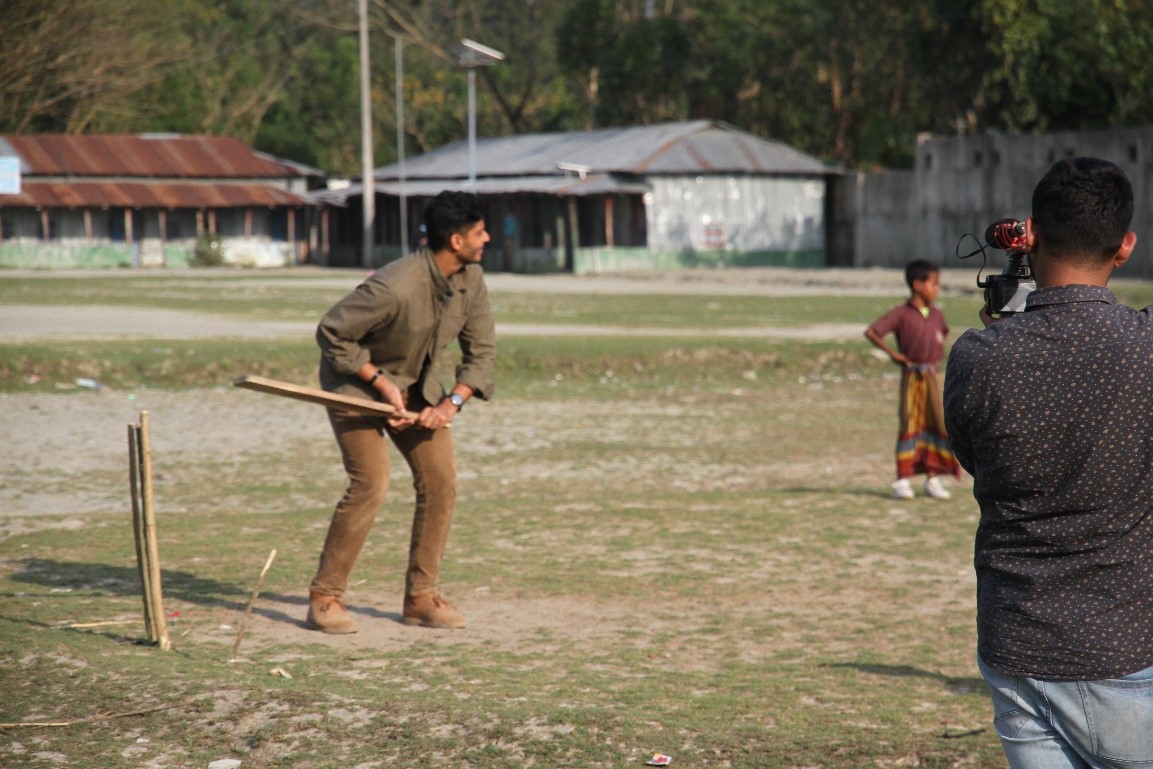The people of Bangladesh are resilient, but without urgent climate action, the future of this fascinating country is uncertain
IFAD Asset Request Portlet
Asset Publisher
The people of Bangladesh are resilient, but without urgent climate action, the future of this fascinating country is uncertain
Estimated reading time: 5 minutes
A young Qasa Alom in 2002, on a family visit to Biswanath. Qasa spent a lot of time as a child by his family’s lake, or “fuskhuni”, where he would swim, skim stones, and fish.
When I was growing up, I visited Bangladesh with my family several times, travelling from the city of Sylhet to Biswanath, my father's ancestral village. My memories of these trips are rose-tinted snapshots of an idyllic country, full of lush green paddy fields, fresh mangos bursting with flavour, and laughter.
My name is Qasa Alom. I am a British-Bangladeshi BBC journalist, radio presenter, and documentary filmmaker. Recently, I joined the Google News Initiative with my YouTube channel, QasaVision.
Throughout my decade-long career, I have covered a variety of topics – from refugees fleeing Afghanistan, to Brexit, to COVID-19. I always wanted to tell a story about Bangladesh, but never quite knew what to say.
Then one day, I overheard a phone call my dad was having with friends in Biswanath. His voice was strained, and he was getting quite upset, as he listened to story after story about people we knew from my childhood who were struggling. There had been a major flood, and they needed money to rebuild houses and just to survive. My father asked for my help to raise money for and awareness of these people and their situation.
I started looking into it more and learned that Bangladesh is a country that lies right in the eye of the climate storm. With two thirds of Bangladesh’s territory less than five metres above sea level, the country is extremely vulnerable to climate change, particularly to flooding caused by rising sea levels.
That’s when I knew I had to tell the story of how Bangladesh and its people are dealing with the climate crisis through my YouTube series ‘Bangladesh: The Climate Frontline’.
Local solutions to global challenges
In early 2022, I went back to Bangladesh for the first time in 15 years. Having previously hosted a virtual field trip event to Bangladesh with IFAD at COP26, this was now my chance to witness IFAD-supported projects in action on the ground.
When I first arrived in Bangladesh, I realised just how much my blissful childhood memories clashed with the reality of living there and fighting an uphill battle every day.
The sun hung low in the sky as I visited Sunamganj on the second day of my trip. A dusty golden light illuminated the horizon, making everything sparkle and shine. Much like the bright and brilliant landscape, the people of Sunamganj are optimistic, curious, and full of hope, despite living in a place that floods for up to eight months of the year.

The next day, I visited Jarakona, a low-lying village next to the Padma River. Here I learned how the village used to be ravaged by floods every year. Now, walls protect the village and technology warns people when a flood is due to happen. Not only are locals earning more, the status of the village has improved, with many people looking to move there.
This transformation was possible thanks to the HILIP-CALIP project, supported by the local government and IFAD. By improving road infrastructure, the project reduces transportation time and costs, widens the access to and market for goods, and provides better access to health centres and schools. The project is having big impacts in one of the most impoverished areas of the country, creating employment and increasing incomes.
Then, on a crystal-bright day, I visited a newly formed island in the coastal chars of the Bay of Bengal. While much of the region is rapidly losing land to soil erosion, sand banks the size of little villages are simultaneously emerging.

I joined a line of local workers planting mangrove saplings with another IFAD-supported project, struggling not to let my feet sink too deep into the squelching mud. Over the next 30 years, the mangrove roots will take hold deep in the ground, accumulating soil and making it firm and strong. As the trees grow tall, they will also act as natural wave breaks, slowing down the speed of the water hitting the mainland. In this way, these new sand banks can become home to hundreds of families in the future.
Things need to change – now
It was inspiring to see these sophisticated yet sustainable solutions in action. These local initiatives, implemented by IFAD and the Bangladeshi people themselves, are standing up to the massive global threat of climate change.

Seeing the resilience of these people, I could not help but feel optimistic about the country, and the rest of the world, coming together to solve these enormous man-made problems.
Yet time is running out. We are fast approaching many environmental tipping points. We need to accelerate action at all levels—from local communities, to governments, through to international organisations – and work together to face the climate crisis.
For my part, I am embracing my new role of telling Bangladesh’s story – of adaptation, of survival, and, hopefully, of thriving in a changing world.
Missed IFAD’s spotlight on Bangladesh at COP26? Catch up here.
Publication date: 01 June 2022